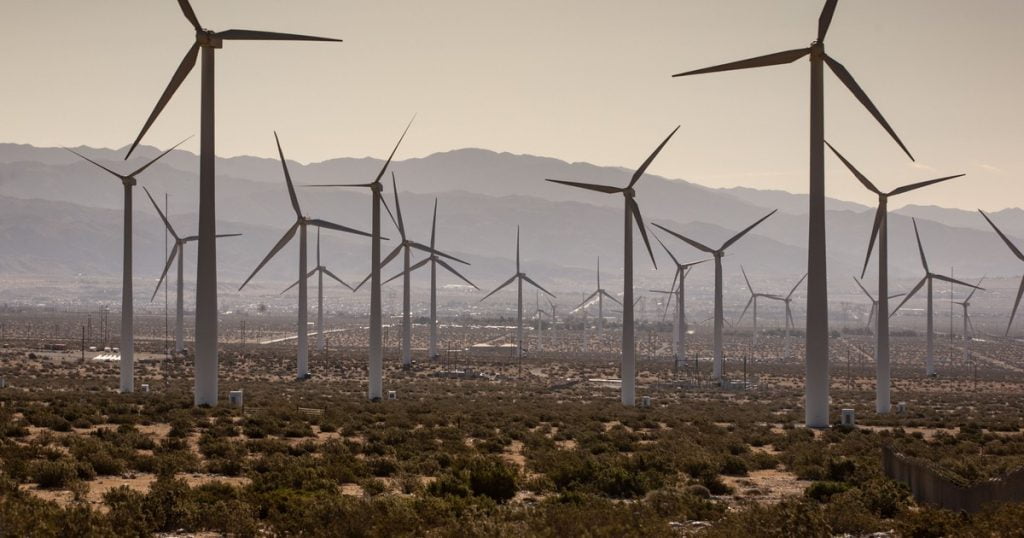California regulators on Thursday unanimously greenlighted a blueprint to cut planet-heating emissions by 85% and get the state to carbon neutrality by 2045, a plan that climate campaigners framed as flawed but still a major step in the right direction.
“This board is starting to show some real climate leadership.”
The California Air Resources Board (CARB) approved the 2022 Scoping Plan for Achieving Carbon Neutrality, which it called an “unprecedented” sector-by-sector roadmap to “guide the world’s fourth-largest economy away from its current dependence on petroleum and fossil gas to clean and renewable energy resources and zero-emission vehicles.”
Democratic Gov. Gavin Newsom—who in September signed a legislative package aimed at meeting the 2045 goal—declared Thursday that “we are making history here in California, and today caps an amazing 10 days for world-leading climate action.”
“California is leading the world’s most significant economic transformation since the Industrial Revolution—we’re cutting pollution, turning the page on fossil fuels, and creating millions of new jobs,” Newsom added, noting that the new plan is also expected to save state residents $200 billion in health costs.
Experts at the Union of Concerned Scientists (UCS) welcomed CARB’s approval of the roadmap.
“This plan accelerates California’s ongoing transition away from a transportation system fueled by petroleum to one largely powered by renewable electricity,” said Jeremy Martin, UCS senior scientist and director of fuels policy. “The petroleum phaseout will be challenging, and there must be a responsible and equitable plan to minimize economic impacts to refinery communities and oil industry workers that they should be involved in developing.”
The board in August moved to only allow the sale of zero-emission new cars in the state by 2035, with incremental goals over the next decade. The plan approved Thursday includes targets for aviation fuel and medium-duty vehicles. Martin emphasized the importance of policymakers ensuring that electric vehicles are accessible and affordable.
Along with changes in transportation and agriculture, the plan calls for dramatically increasing renewable power.
“An unprecedented buildup of solar, wind, energy storage, and other clean energy technologies will be essential to reducing California’s emissions,” said UCS Western states energy manager Mark Specht. “The state must now embark on the task of ramping up renewable energy production and sustaining record-breaking levels of deployment over the next two decades.”
The roadmap acknowledges that the state “adopted legislation to facilitate extension of the Diablo Canyon Nuclear Power Plant for five years beyond its 2025 planned closure.” The Biden administration came under fire last month for awarding Pacific Gas & Electric (PG&E) $1.1 billion in federal funding to keep its reactors running.
“The plan is very reliant on carbon dioxide removal, particularly energy-intensive direct air capture, to achieve net-zero emissions,” Specht pointed out. “California should carefully assess the feasibility of scaling up these nascent technologies and consider whether additional emissions reductions across the economy are a more viable approach to meeting its climate goals.”
Climate campaigners and state residents on Thursday were also critical of the roadmap’s reliance on carbon capture technologies.
“Improvements in the state climate plan—including bold targets for expanding mass transit, stopping the expansion of gas power plants, and planning for the phasedown of oil production—could not have been won without the political courage of current board leadership,” said California Environmental Justice Alliance political director Mabel Tsang. “We applaud the call for an inter-agency process to coordinate the phasedown of oil refining and extraction in California.”
“However, the plan still paves the way for billions in subsidies for oil and gas executives by using carbon capture schemes to lock in refineries, dirty gas power plants, and polluting bioenergy and hydrogen facilities,” Tsang stressed. “We urge CARB to hold a dedicated rulemaking process for carbon capture and storage permitting to ensure that these projects do not increase air and water pollution in already overburdened communities.”
“The plan still paves the way for billions in subsidies for oil and gas executives by using carbon capture schemes to lock in refineries, dirty gas power plants, and polluting bioenergy and hydrogen facilities.”
Connie Cho, an associate attorney at one of Communities for a Better Environment’s California offices, offered similar applause and criticism.
“This board is starting to show some real climate leadership with their call for a coordinated, multi-agency process to phase down oil refining and extraction as demand for oil declines in California,” she said. “This is a huge step toward protecting public health, stabilizing our climate, and finally addressing the growing issue of oil exports.”
Cho also warned that “the plan still offers massive giveaways to Big Oil, using carbon capture to keep refineries online and increasing pollution through the expansion of dirty hydrogen in California.”
While some campaigners pointed out the plan’s shortcomings, others highlighted bright spots, including that several board members visited communities impacted by gas plants, oil refineries, and other polluting industries.
“The improvements in the state’s climate plan show what’s possible when regulators and decision-makers step out of the halls of Sacramento and see firsthand the consequences of their policy decisions,” said Juan Flores, a community organizer with the Center for Race, Poverty, and Environment and member of CARB’s Environmental Justice Advisory Committee.
“We hope that this practice will be a model for future climate policy development both within CARB and beyond,” Flores added, “and urge CARB to establish a permanent Environmental Justice Advisory Council and incorporate robust public health analysis for the implementation of the scoping plan.”

